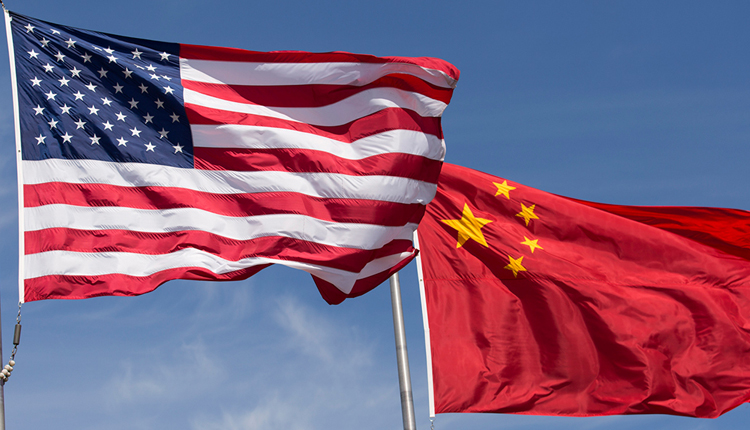The United States’ and China’s top trade negotiators were set to meet on Thursday for the first time since late July to try to find a way out of a 15-month trade war as new irritants between the world’s two largest economies threatened hopes for progress.
Chinese Vice Premier Liu He, U.S. Trade Representative Robert Lighthizer and Treasury Secretary Steven Mnuchin will seek to narrow differences enough to avoid a scheduled Oct. 15 tariff rate increase on $250 billion worth of Chinese goods.
But the atmosphere surrounding the talks was soured by the U.S. Commerce Department’s decision on Monday to blacklist 28 Chinese public security bureaus, technology and surveillance firms, citing human rights violations of Muslim minority groups in China’s Xinjiang province. A day later, the U.S. State Department imposed visa restrictions on Chinese officials related to the Xinjiang issue.
If negotiations break down again, by Dec. 15, nearly all Chinese goods imports into the United States — more than $500 billion — could be subject to punitive tariffs in the dispute that erupted during U.S. President Donald Trump’s time in office.
Commerce Secretary Wilbur Ross said in Sydney on Thursday that the tariffs were working, forcing Beijing to pay attention to U.S. concerns about its trade practices.
“We do not love tariffs, in fact we would prefer not to use them, but after years of discussions and no action, tariffs are finally forcing China to pay attention to our concerns,” Ross said in remarks prepared for delivery on an official visit to Australia.
Although some media reports suggested both sides are considering an “interim” deal that would suspend planned further U.S. tariffs in exchange for additional purchases of American farm products, Trump has repeatedly dismissed this idea, insisting that he wants a “big deal” with Beijing that addresses core intellectual property issues.
Speaking to reporters in Washington on Wednesday, Trump said: “If we can make a deal, we’re going to make a deal, there’s a really good chance.”
“In my opinion China wants to make a deal more than I do,” Trump added.
The two sides have been at loggerheads over U.S. demands that China improve protections of American intellectual property, end cyber theft and the forced transfer of technology to Chinese firms, curb industrial subsidies and increase U.S. companies’ access to largely closed Chinese markets.
But Chinese officials, surprised and upset by the U.S. blacklisting of Chinese companies, including video surveillance gear maker Hikvision, along with the suspension of U.S. visas for some Chinese officials, told Reuters that Beijing had lowered expectations for significant progress from the talks.
“I’ve never seen China respond with concessions to someone throwing down the gauntlet in this manner,” said Scott Kennedy, a China trade expert at the Center for Strategic and International Studies in Washington. “It suggests to me that the U.S. may have determined that progress was impossible so everyone is just going through the motions.”
Other flashpoints that have cropped up in recent days include China’s swift action to cut corporate ties to the National Basketball Association over a team official’s tweet in support of Hong Kong pro-democracy protesters.
But in a possible easing of tensions, The New York Times reported that the Trump administration will soon issue licenses allowing some U.S. companies to sell non-sensitive goods to China’s top telecom equipment maker Huawei Technologies.
The report cited unnamed people familiar with the matter. A Commerce Department spokesman said the agency has been given no such direction. Huawei since May has been on the same trade blacklist affecting Hikvision because the United States says the company can spy on customers – an allegation Huawei denies.
